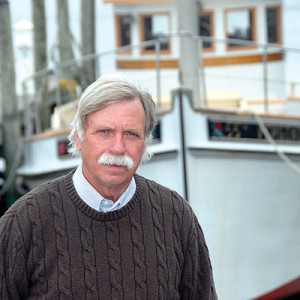Mid-Atlantic yards make the transition to Travelifts
Throughout the Mid-Atlantic region, boatyards and commercial fishermen, who historically used marine railways to haul and maintain boats, are switching over to hauling vessels in the straps of motorized commercial boat lifts.
In the early years of railways, men, mules and horses were used to turn a windlass when hauling boats up on the rails. As gasoline engines evolved, 1-cylinder engines (one-lungers) became the main power for hauling boats. Model A Ford engines took the place of the one-lunger. As engines continued to advance, so did the size of railways, until boatyards were able to haul 100-foot-plus vessels.

This story was first published in the June issue of National Fisherman. Subscribe today for digital and print access.
Throughout the 19th and most of the 20th century, owners of commercial fishing boats depended on railways for the maintenance and upkeep of their vessels. The advancement of marine boat lifts has brought some changes.
Stephan Chayer, director of International Sales for Marine Travelift in Sturgeon Bay, Wisc., says that in the 1940s a man named Baudouin invented the first “gantry type boat crane” in Wisconsin. He was working at Yacht Club of Sturgeon Bay, where boats were heavy and too many to haul out in time to avoid the start of the November winter freezes. In winters, ice accumulated a foot thick on Sturgeon Bay, crushing hulls if boats were left in the water.
One day Baudouin got the idea to use two piers combined with a steel frame on four truck wheels, which also employed four blocks with straps. With this innovation he managed to pull a boat weighing a few tons from the water and placed it on the ground, says Chayer.
Today, Marine Travelift builds and sells boat hoists that lift vessels upward of 1,500 metric tons and many yards throughout the country have replaced their railway cradles and gears with boat lifts.
For years, boat lifts were associated with the hauling of sailboats, yachts and pleasure boats, while commercial fishermen stuck to hauling their boats on railways.
Smith Marine Railway in Dare, Va. has been in operation since the 1840s.
“I think the decline in railway systems is twofold,” says Tim Smith spokesman for the railway. “First, the boat lift systems work well with many of the newer fiberglass boats, and especially sailboats: short rounded keel sailboats are difficult to block on a railway cradle.
“The other reason is that the maintenance required to maintain a railway cradle and tracking system going into the water is very expensive these days. Many of the wooden boats — older classic yachts and workboats — still do much better on a railway cradle and track system. Travelifts tend to squeeze the hull since the keel isn’t being supported by a hard surface.”
To read the full article, subscribe to National Fisherman today for digital and print access.






.jpg.small.400x400.jpg)
